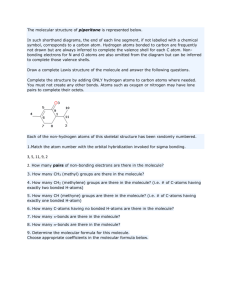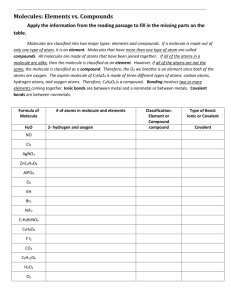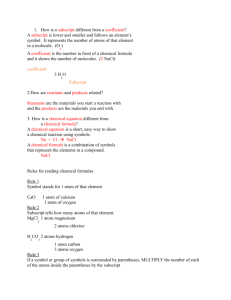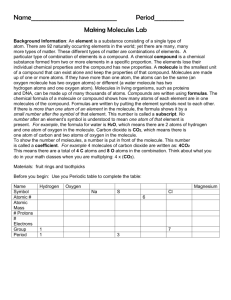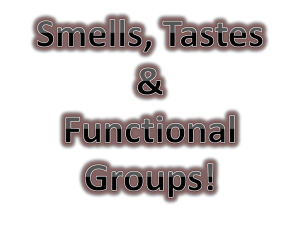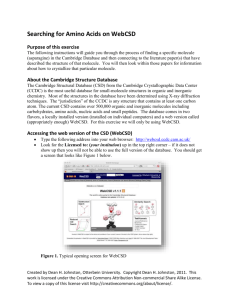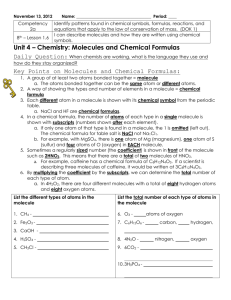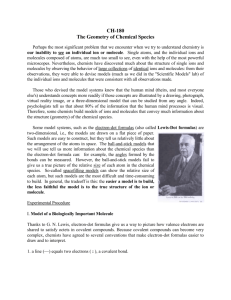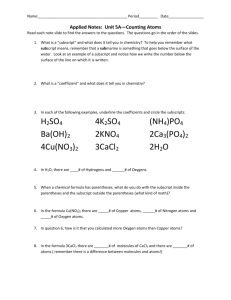Molecule Notes
advertisement
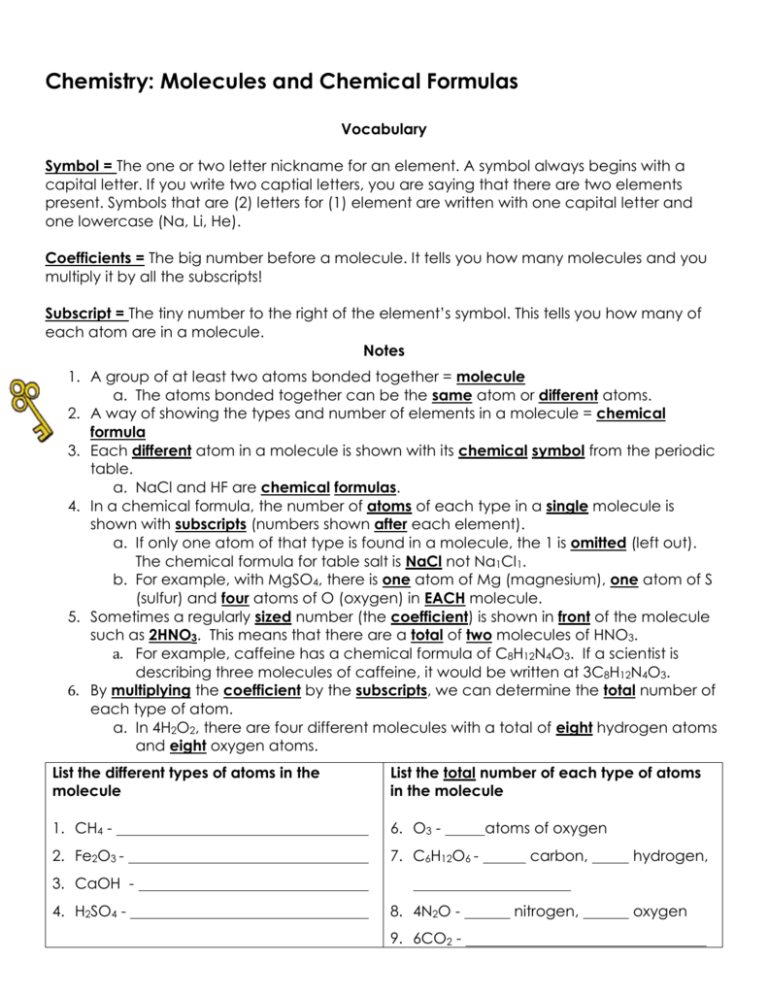
Chemistry: Molecules and Chemical Formulas Vocabulary Symbol = The one or two letter nickname for an element. A symbol always begins with a capital letter. If you write two captial letters, you are saying that there are two elements present. Symbols that are (2) letters for (1) element are written with one capital letter and one lowercase (Na, Li, He). Coefficients = The big number before a molecule. It tells you how many molecules and you multiply it by all the subscripts! Subscript = The tiny number to the right of the element’s symbol. This tells you how many of each atom are in a molecule. Notes 1. A group of at least two atoms bonded together = molecule a. The atoms bonded together can be the same atom or different atoms. 2. A way of showing the types and number of elements in a molecule = chemical formula 3. Each different atom in a molecule is shown with its chemical symbol from the periodic table. a. NaCl and HF are chemical formulas. 4. In a chemical formula, the number of atoms of each type in a single molecule is shown with subscripts (numbers shown after each element). a. If only one atom of that type is found in a molecule, the 1 is omitted (left out). The chemical formula for table salt is NaCl not Na1Cl1. b. For example, with MgSO4, there is one atom of Mg (magnesium), one atom of S (sulfur) and four atoms of O (oxygen) in EACH molecule. 5. Sometimes a regularly sized number (the coefficient) is shown in front of the molecule such as 2HNO3. This means that there are a total of two molecules of HNO3. a. For example, caffeine has a chemical formula of C8H12N4O3. If a scientist is describing three molecules of caffeine, it would be written at 3C8H12N4O3. 6. By multiplying the coefficient by the subscripts, we can determine the total number of each type of atom. a. In 4H2O2, there are four different molecules with a total of eight hydrogen atoms and eight oxygen atoms. List the different types of atoms in the molecule List the total number of each type of atoms in the molecule 1. CH4 - 6. O3 - 2. Fe2O3 - 7. C6H12O6 - atoms of oxygen carbon, hydrogen, 3. CaOH 4. H2SO4 - 8. 4N2O 9. 6CO2 - nitrogen, oxygen 5. CH3Cl -


